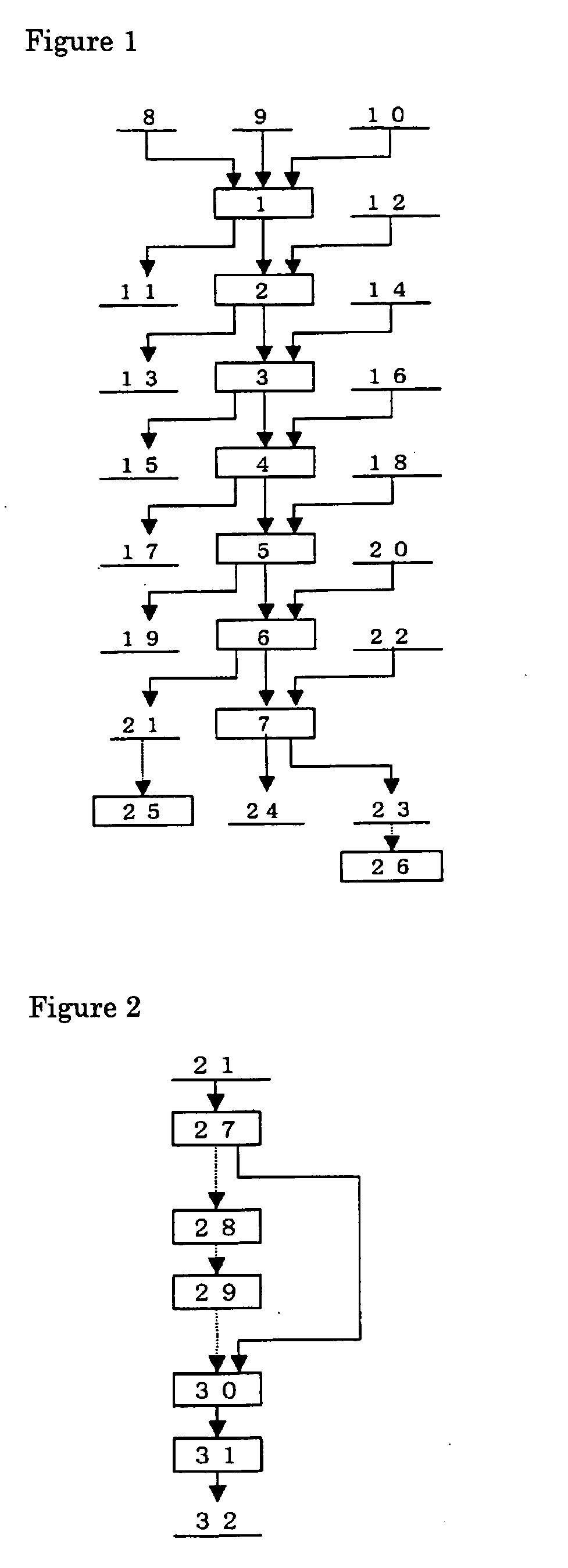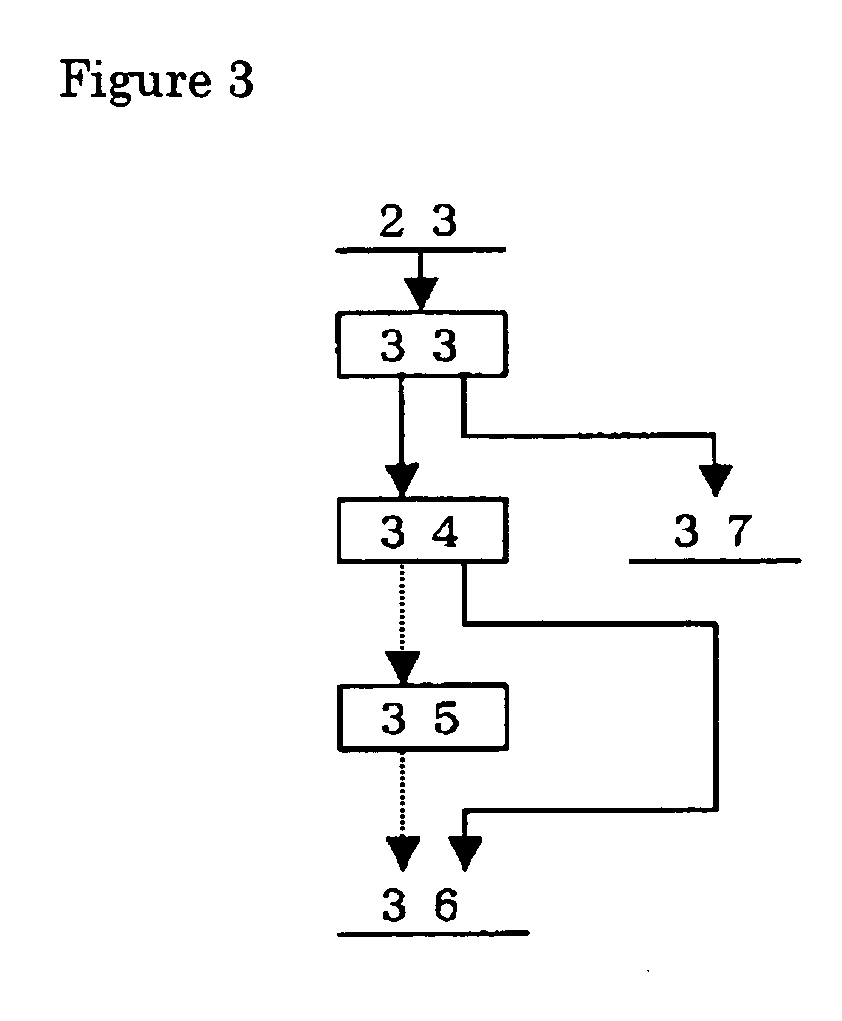Process for mutual separation of platinum group metals
a platinum group metal and mutual separation technology, applied in the direction of process efficiency improvement, chemistry apparatus and processes, liquid solution solvent extraction, etc., can solve the problems of increasing the loss of pgm separated, limited production of natural minerals, and high concentration of platinum ores containing these metals, so as to prevent the increase of impurity content, prevent the decomposition of chloro complex, and efficiently remove impurity elements
- Summary
- Abstract
- Description
- Claims
- Application Information
AI Technical Summary
Benefits of technology
Problems solved by technology
Method used
Image
Examples
example 1
A PGM concentrate as a raw material was treated a series of steps; leaching of the material containing PGM (first step), solvent extraction to remove the impurity elements (second step), solvent extraction to extract palladium (third step), solvent extraction to remove cationic impurity elements (fourth step), hydrolysis of ruthenium, rhodium and iridium (fifth step), leaching of ruthenium (sixth step) and refining of ruthenium, and solvent extraction to extract iridium (seventh step) and refining of iridium. The products from these steps were evaluated. Table 1 gives the chemical composition of the PGM concentrate as the raw material. Part of each PGM was in the form of sulfide.
TABLE 1PtPdRhIrRuCuSePbBiSbTeSnAu0.953.820.200.030.410.170.0815.213.70.040.130.011.45
(Unit: % by weight (wet basis))
(1) First Step
The above-described PGM concentrate was leached with chlorine, where 60 kg of the concentrate was suspended in 200 L of water, and the resulting suspension was sealed with ...
PUM
| Property | Measurement | Unit |
|---|---|---|
| pH | aaaaa | aaaaa |
| pH | aaaaa | aaaaa |
| pH | aaaaa | aaaaa |
Abstract
Description
Claims
Application Information
 Login to View More
Login to View More - R&D
- Intellectual Property
- Life Sciences
- Materials
- Tech Scout
- Unparalleled Data Quality
- Higher Quality Content
- 60% Fewer Hallucinations
Browse by: Latest US Patents, China's latest patents, Technical Efficacy Thesaurus, Application Domain, Technology Topic, Popular Technical Reports.
© 2025 PatSnap. All rights reserved.Legal|Privacy policy|Modern Slavery Act Transparency Statement|Sitemap|About US| Contact US: help@patsnap.com



